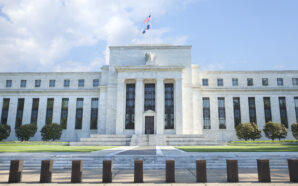
Credit: Unsplash
The Federal Reserve announced today that all 31 banks participating in its annual stress test have demonstrated their ability to withstand a severe hypothetical economic downturn while maintaining their capacity to lend to consumers and businesses.
In this year’s stress test, each bank met the requirement to absorb losses and retain capital above the minimum levels mandated by regulatory standards. The stress scenario included assumptions of a surge in unemployment to 10%, a 40% plunge in commercial real estate values, and a 36% drop in housing prices.
“This year’s results show that under our stress scenario, large banks would take nearly $685 billion in total hypothetical losses, yet still have considerably more capital than their minimum common equity requirements,” said Michael Barr, the Fed’s vice chair for supervision. “This is good news and underscores the usefulness of the extra capital that banks have built in recent years.”
The stress test, an annual regulatory exercise, ensures that banks maintain adequate reserves for potential bad loans and determines the limits on share repurchases and dividends. This year’s test included major institutions such as JPMorgan Chase, Goldman Sachs, American Express, and regional lenders like Truist.
Despite the aggregate capital levels falling by 2.8 percentage points—a steeper decline than last year’s—no bank faced significant challenges from the test’s assumptions, which were consistent with those used in the 2023 stress test. The decrease in capital levels is attributed to the banking industry’s increased holdings of consumer credit card loans and downgraded corporate bonds, coupled with squeezed lending margins compared to the previous year.
“While banks are well-positioned to withstand the specific hypothetical recession we tested them against, the stress test also confirmed that there are some areas to watch,” Barr added. “The financial system and its risks are always evolving, and we learned in the Great Recession the cost of failing to acknowledge shifting risks.”
Additionally, the Fed conducted an exploratory analysis on funding stresses and a potential trading meltdown, focusing on the eight largest banks. The results showed that these banks could withstand a sudden increase in deposit costs alongside a recession. In a scenario where five large hedge funds face collapse, the big banks would incur losses between $70 billion and $85 billion. The Fed noted that while the banks have significant exposure to hedge funds, they are resilient to various trading book shocks.
-
Following the massive success of its gold and silver offerings, Costco is making headlines once again with the addition...
-
President Joe Biden will travel to North and South Carolina today to assess the widespread devastation caused by Hurricane...
-
As Claudia Sheinbaum prepares to take office as Mexico’s first female president on October 1, concerns are escalating in...
-
The cryptocurrency market experienced a significant rally on Thursday, just one day after the Federal Reserve made the surprise...
-
Fitch Ratings, a leading global credit rating agency, has released a new economic outlook report predicting that the U.S....
-
In the wake of the tragic shooting at Apalachee High School that claimed the lives of two students and...
-
With Federal Reserve Chair Jerome Powell signaling that interest rates might be cut soon, investors are contemplating how this...
-
Consumer prices in the United States increased at the slowest rate in over three years last month, raising hopes...
-
Sophia Rosing, a former University of Kentucky student, pleaded guilty on Monday to multiple charges stemming from a 2022...
-
In a dramatic twist to the 2024 presidential campaign, tech mogul Elon Musk has thrown his support behind Donald...
-
In a significant shake-up at Starbucks, Laxman Narasimhan has stepped down from his role as CEO and board member...
-
Walt Disney Parks and Resorts is challenging a wrongful death lawsuit filed by Jeffrey Piccolo, arguing that the case...




















